The post Discovering The Koga Miyata Full Pro-A appeared first on Classic Japanese Bicycles.
]]>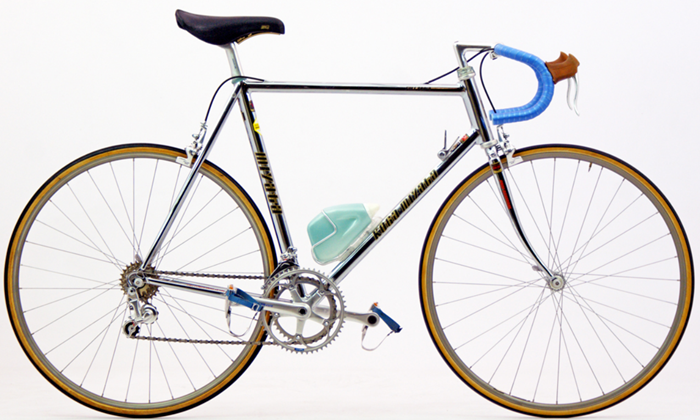
The Koga Miyata is this weeks “Japanese Bicycle of the Week”. The brand has long been synonymous with precision and craftsmanship. Founded in the 1970s, this iconic brand brought together Dutch cycling design and Japanese bike engineering excellence. A
As a result, Koga Miyata quickly became known for producing high-quality bicycles that pushed the boundaries of 1980s cycling technology and bicycle performance.

Every model they crafted seemed to tell a story of dedication to the cycling craft, deeply embedded in cycling heritage.
dedication to the cycling craft, deeply embedded in cycling heritage.
One such story, indeed, is that of the FULL PRO-A, a bike that truly stands out in the Koga Miyata lineup.
The Allure of the FULL PRO-A Model as a Classic Racing Bike from the Mid-80s
The Full Pro-A
In the mid-80s, the FULL PRO-A captured the imagination of road cycling enthusiasts. This model wasn’t just another bike; it was a masterpiece of engineering and design, embodying the spirit of innovation that defined Koga Miyata during this era.
It became a significant part of the vintage bicycle market, admired by bike collectors for its rarity and performance.

What made the FULL PRO-A particularly special was its aerodynamic bike design. The “A” in FULL PRO-A stands for Aero, reflecting the bike’s focus on cutting through the wind with minimal resistance.

This was a time when aerodynamics were becoming a buzzword in the cycling world, and Koga Miyata was at the forefront of this trend. However, the FULL PRO-A wasn’t just about speed.
It was also about elegance, craftsmanship, and the pure joy of riding a machine that felt like an extension of the rider, perfectly blending classic bike aesthetics with modern cycling culture.
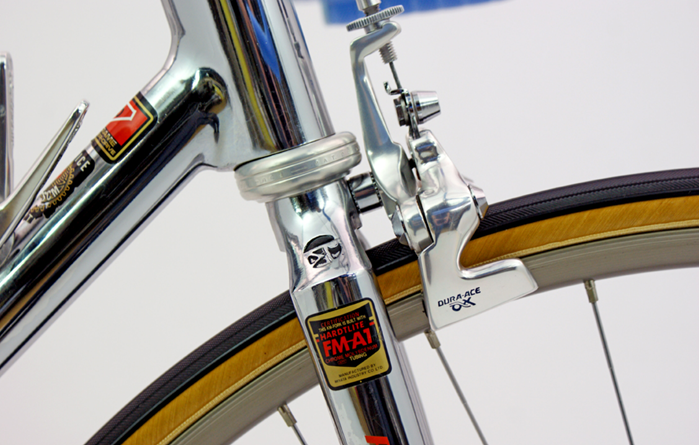
Riders who were lucky enough to own a Koga Miyata FULL PRO-A in the 80s knew they had something special. The bike was revered not only for its high-speed cycling performance but also for its stunning aesthetic.
The fully chrome-plated frame glistened under the sun, and the sleek lines of the design drew admiring glances wherever it went. It was a bike that made a statement, both on the road and in the competitive cycling community.
The allure of the FULL PRO-A has not diminished over time. In fact, it has only grown stronger. Today, vintage racing bike enthusiasts and bike collectors seek out the FULL PRO-A for its blend of performance and beauty.
It’s a bike that represents an era of cycling where innovation and craftsmanship were paramount.
Consequently, owning a Koga Miyata FULL PRO-A isn’t just about having a piece of Koga Miyata history; it’s about experiencing the legacy of a bike that continues to inspire and captivate, decades after it first hit the road.
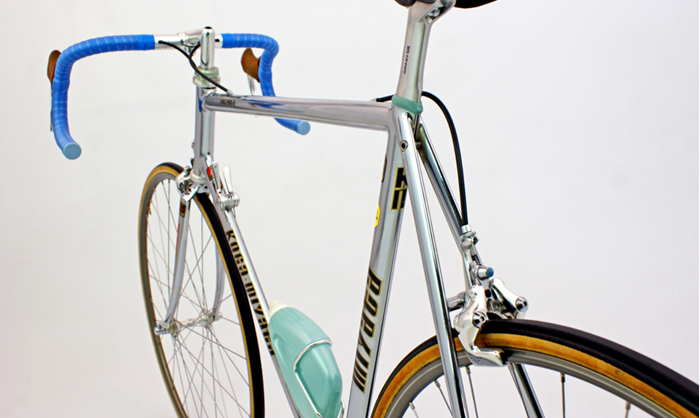
The Birth of Aero: What Does the “A” in FULL PRO-A Stand For?
The “A” in FULL PRO-A stands for Aero, a nod to the bike’s aerodynamic focus. During the early 80s, aerodynamics became a significant trend in cycling. Manufacturers were eager to create competitive road bikes that cut through the wind with less resistance.
This push for speed and efficiency drove innovation in old school bike technology. Koga Miyata, always ahead of the curve, embraced this challenge with their lightweight frame designs.

Koga Miyata’s engineers didn’t just tweak existing designs; they reimagined what a racing bike could be. They integrated the latest aerodynamic concepts into the FULL PRO-A, blending steel frame bicycles with modern aerodynamic principles.
A Totally New Design
This meant more than just a sleek frame. It involved rethinking the bike’s entire structure. From the positioning of the cables to the angle of the tubes, everything was designed to reduce drag, showcasing Koga Miyata’s dedication to custom bike builds that cater to performance-driven cyclists.
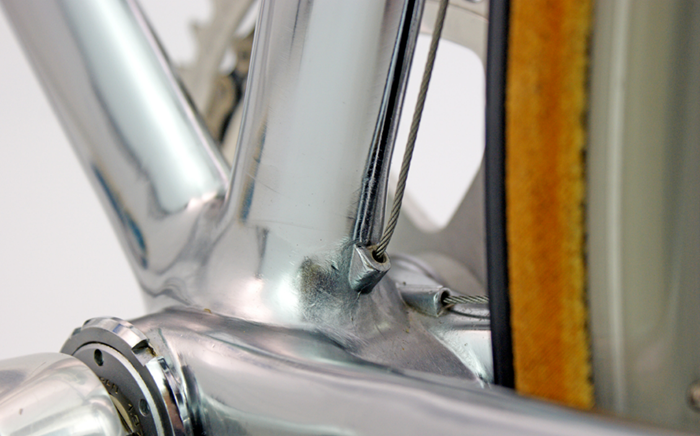
Shimano Dura Ace AX: A Group Set Ahead of Its Time
The Shimano Dura Ace AX groupset was revolutionary. Introduced in the early 80s, it marked a new era for classic bike components. Shimano aimed to create a groupset that would not only enhance bicycle performance but also set a new standard in design. The result was something truly special, often revered in cycling memorabilia for its impact on the sport.
Moreover, the Dura Ace AX group set was visually striking. The sleek, polished finish wasn’t just for show. It represented a commitment to both form and function. Riders could feel the difference, too.
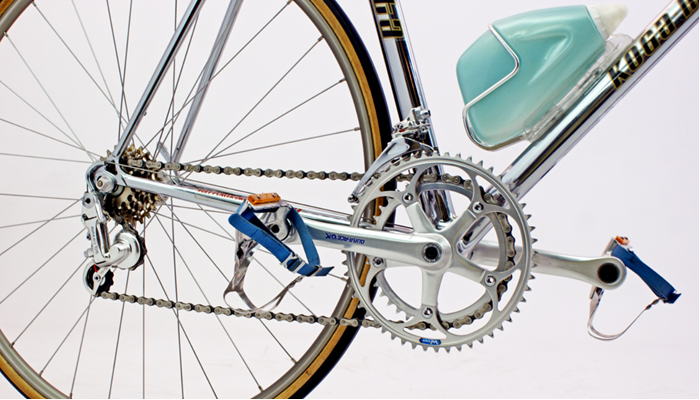
The smooth shifting and responsive braking set the Dura Ace AX apart from its competitors. Even though it didn’t achieve widespread commercial success, it still left a lasting impact on the cycling world, influencing future designs in retro cycling gear.
One of the main focuses of the Dura Ace AX was aerodynamics. Every component was carefully crafted to reduce drag. This wasn’t just about making the bike faster; it was about rethinking how each part interacted with the air.
Koga Miyata Top Of The Line Components
The crankset, brakes, and even the derailleur were shaped to minimize wind resistance. Shimano’s engineers understood that every second counted in competitive cycling. Therefore, they pushed the boundaries of what was possible, contributing significantly to the evolution of rare bicycle models like the FULL PRO-A.
The Koga Miyata FULL PRO-A was one of the few iconic racing bikes to feature this innovative groupset. This choice further emphasized the bike’s focus on cutting-edge technology.
The Dura Ace AX and the FULL PRO-A were a perfect match. Both were designed for speed and precision, making them ideal for serious cyclists. Together, they represented the pinnacle of cycling innovation in the 80s.
The Frame: Fully Chrome-Plated Perfection
The frame of the Koga Miyata FULL PRO-A is a true work of art. At first glance, the fully chrome-plated finish immediately captures your attention. This isn’t just any frame; it’s a masterpiece crafted with precision.
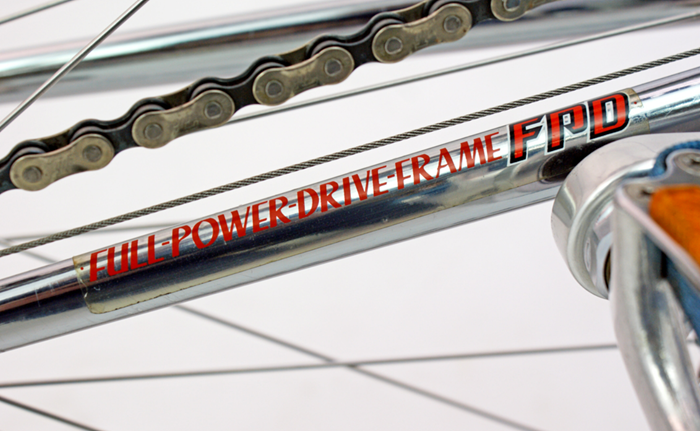
CHROME PLATING
The chrome plating wasn’t merely about aesthetics, though. It provided durability and protection against the elements, a testament to the exceptional bike craftsmanship that Koga Miyata is known for. This ensured that the bike could withstand the rigors of racing while maintaining its stunning appearance.
Moreover, the chrome finish gave the FULL PRO-A an unmistakable shine. Whether in sunlight or under city lights, the frame glistened, turning heads wherever it went.
But the beauty of the frame went beyond its surface. Koga Miyata engineered it to be lightweight and aerodynamic, making it perfect for high-performance bicycles in competitive cycling.
Every detail of the frame was meticulously designed. The tubing was sleek and thin, reducing weight without sacrificing strength. The internal cable routing was another standout feature.
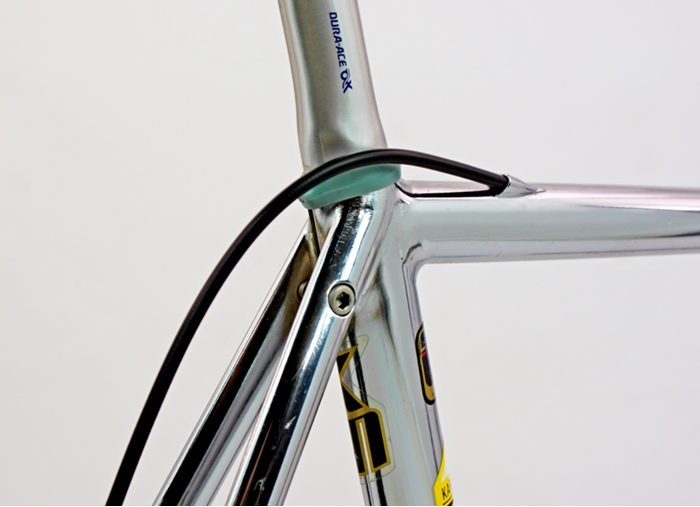
This not only enhanced the bike’s aerodynamics but also gave it a clean, uncluttered look, appealing to those who appreciate classic bike aesthetics. The cables were hidden away, allowing the smooth lines of the frame to stand out even more.
The geometry of the frame also played a crucial role in its performance. It was designed for speed, with angles and proportions optimized for racing.

The frame’s stiffness ensured efficient power transfer, allowing riders to push harder and go faster. At the same time, it offered enough compliance to absorb road vibrations, providing a smoother ride, which was essential for long-distance cycling.
In addition, the chrome plating wasn’t just a superficial coating. It was applied with care, ensuring a long-lasting finish that resisted wear and corrosion. This made the FULL PRO-A not only beautiful but also resilient.
Decades later, many of these frames still look as stunning as the day they were made, making them prized finds in retro bike restoration and the vintage bicycle market.
Catalog Accuracy: A Build True to Its Origins
The Koga Miyata FULL PRO-A is more than just a vintage racing bike; it’s a near-perfect replica of its original 1984/1985 catalog specifications.
Important Attention To Detail
This attention to detail is what makes the bike truly special. Enthusiasts and collectors alike appreciate the dedication to authenticity that Koga Miyata has shown in maintaining the bike’s integrity, which is a significant part of Koga Miyata history.
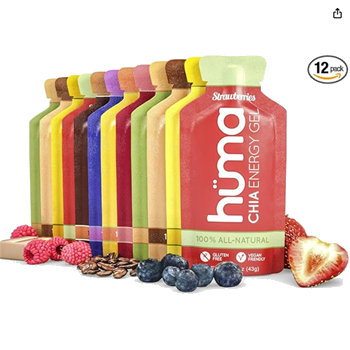
The current build of the FULL PRO-A stays remarkably true to its origins. Nearly every component mirrors what you would have found in the mid-80s.
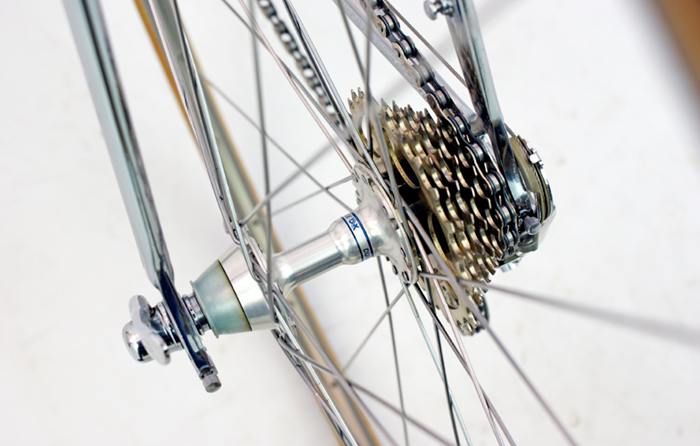
From the Shimano Dura Ace AX groupset to the Wolber Profile 18 rims, each part has been carefully selected to match the original catalog. This adherence to the original design isn’t just about nostalgia; it’s about preserving the bike’s performance characteristics as they were intended.
Moreover, the chrome-plated frame, which we’ve already discussed in detail, remains a standout feature. It continues to embody the same sleek, aerodynamic principles that made it revolutionary in the first place.
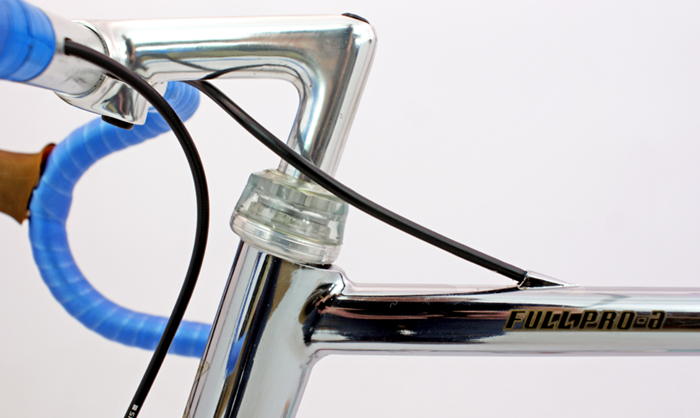
INTERNAL CABLE ROUTING
The fully internal cable routing, another hallmark of the original design, is faithfully preserved. This not only maintains the bike’s clean, uncluttered look but also enhances its aerodynamic efficiency, crucial for maintaining the bike’s reputation among competitive cyclists.
Even the Concor Profile saddle, a key component for rider comfort, has been kept in line with the original build. The choice of materials and design reflects the high standards Koga Miyata set in the 80s.
The FULL PRO-A was designed for speed and endurance, and these characteristics are evident in the bike’s current build, which appeals to those involved in classic bike restoration and retro bike restoration projects.
However, there are a few minor deviations from the catalog. The bike now features Ritchey tires instead of the original Wolber Record Route. While this is a small change, it’s one that some purists might notice.
CHRISTOPHE PEDAL STRAPS
Additionally, Christophe pedal straps have replaced the original Koga Miyata straps. These changes, while minor, do not detract from the bike’s overall authenticity. In fact, they can be seen as subtle updates that keep the bike functional while staying true to its heritage, making it a desirable option for road cycling enthusiasts and bike collectors.
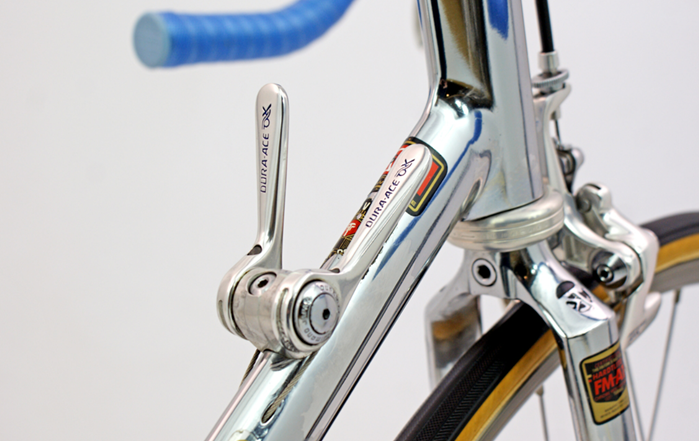
Starting with the gears, the Dura Ace AX system offered smooth, precise shifting. In an era when split-second changes in gear could make or break a race, this precision was invaluable.
Shimano designed the gears with aerodynamics in mind, ensuring that every shift was both efficient and lightning-fast. This attention to detail meant that riders could maintain their momentum without unnecessary drag or resistance, a critical factor in bicycle performance.
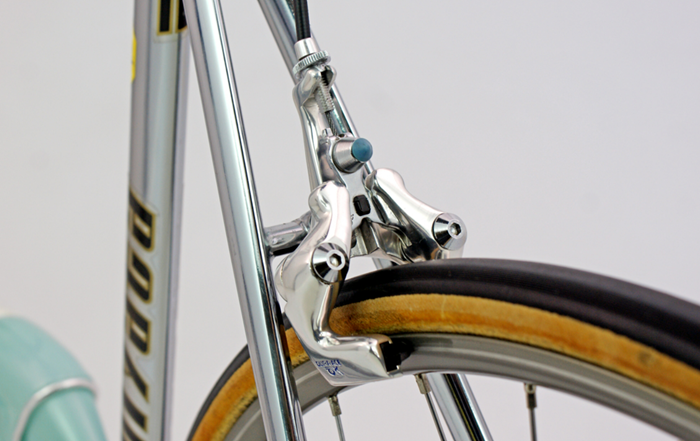
The brakes, too, were a marvel of engineering. Shimano’s Dura Ace AX brakes were not just powerful; they were also lightweight. This combination was rare in the 80s, where power often came at the cost of added weight.
However, with the FULL PRO-A, you got the best of both worlds. The brakes provided strong, reliable stopping power while keeping the bike light and nimble. This balance made the FULL PRO-A a top choice for serious competitors in the realm of competitive cycling.

The crank, another key component, was designed to maximize pedal efficiency and power transfer. Every pedal stroke translated directly into forward momentum.
The Dura Ace AX crankset was stiff yet lightweight, ensuring that no energy was wasted. Cyclists could push hard, knowing that the FULL PRO-A would respond instantly. This level of responsiveness was essential for high-speed cycling.
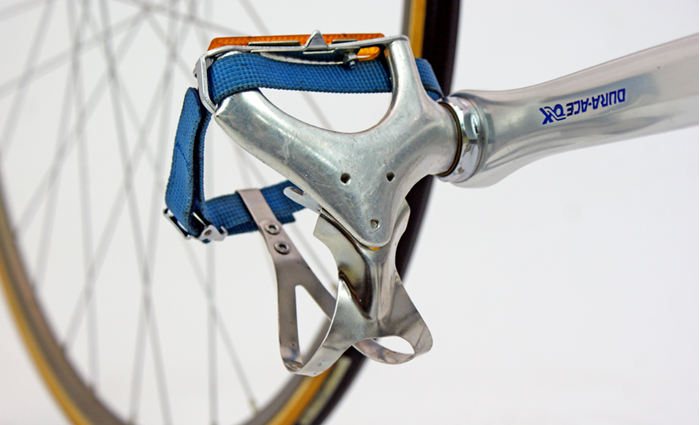
The Shimano Dyna Drive pedal system was another innovative feature of the Koga Miyata FULL PRO-A, reflecting Shimano’s continuous drive to push the boundaries of cycling technology.
Introduced in the early 1980s alongside the Dura Ace AX groupset, the Dyna Drive pedals were designed with a focus on improving pedaling efficiency and rider ergonomics, and they quickly became a hallmark of advanced cycling design.
SHIMANO DYNA DRIVE PEDALS
Unlike traditional pedals, which typically place the pedal axle below the ball of the foot, the Dyna Drive system positioned the axle directly under the foot. This design allowed for a lower center of gravity and a more direct transfer of power from the rider to the bike.
By lowering the rider’s foot by a few millimeters, the Dyna Drive pedals provided a more efficient power transfer, which, in theory, reduced energy loss during pedaling. This subtle change was aimed at maximizing the rider’s output, especially during intense sprints or long climbs.
Lower Profile Pedaling
Moreover, the Dyna Drive pedals were larger in diameter than standard pedals, which contributed to a more stable and comfortable platform for the rider’s foot. This increased stability was particularly beneficial for competitive cyclists, as it allowed for a more consistent pedal stroke and reduced the likelihood of foot fatigue during long rides.
The design also meant that riders could maintain a more consistent cadence, as the efficient power transfer helped to smooth out the pedaling motion.
Shimano’s Dyna Drive Pedal System
However, the Dyna Drive system wasn’t without its challenges. The unique design required special shoes with recessed cleats, which limited its widespread adoption. Despite this, the Dyna Drive system remains a fascinating example of Shimano’s innovative approach to cycling technology.
While it didn’t become a mainstream success, it showcased Shimano’s willingness to experiment with new ideas and push the envelope of what was possible in cycling equipment.
The Saddle and Rims: Comfort Meets Speed
The Koga Miyata FULL PRO-A was not just about speed; it was also designed with rider comfort in mind. This balance is perfectly embodied in the choice of the Concor Profile saddle. The Concor Profile was a favorite among professional cyclists in the 80s, and for good reason.
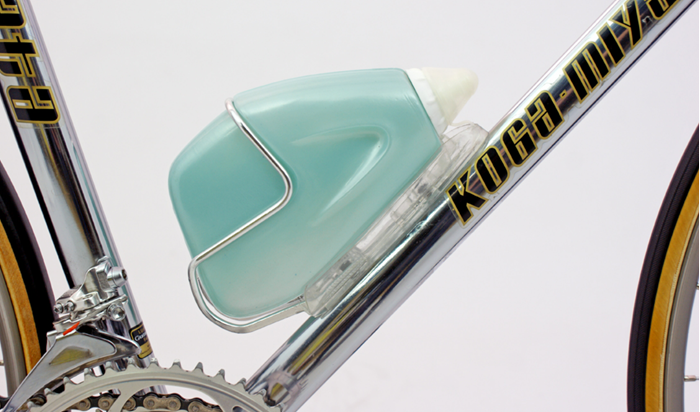
Its sleek design provided ample support without sacrificing comfort. The saddle’s shape was specifically tailored to reduce pressure on sensitive areas, allowing riders to maintain a comfortable position even on long rides.
The Concor Profile Saddle
Moreover, the Concor Profile was known for its lightweight construction. This was crucial for a racing bike like the FULL PRO-A, where every gram counted. Despite its minimal weight, the saddle didn’t compromise on durability.
It was built to withstand the rigors of competitive cycling, making it the perfect choice for those who demanded both performance and comfort.
WOLBER PROFILE RIMS
In addition to the saddle, the Wolber Profile 18 rims played a key role in enhancing the bike’s aerodynamics and performance. These rims were designed with a focus on reducing wind resistance, a critical factor in maintaining high speeds.
The Profile 18 rims were not only lightweight but also incredibly strong, ensuring that they could handle the demands of competitive racing.
Koga Miyata Aerodynamic Profile
The rims’ aerodynamic profile helped to minimize drag, allowing the bike to slice through the air with ease. This design was especially important in time trials and sprints, where even a small reduction in drag could make a significant difference.
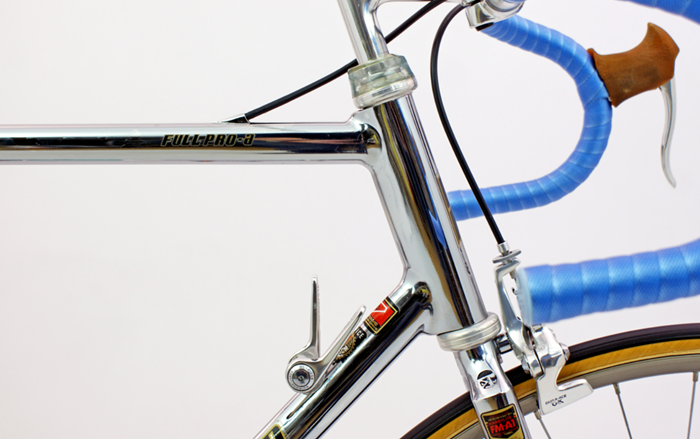
Furthermore, the Wolber Profile 18 rims provided excellent stability, giving riders the confidence to push their limits without worrying about the bike’s handling.
Great Combination
Together, the Concor Profile saddle and Wolber Profile 18 rims created a harmonious blend of comfort and speed. The saddle ensured that riders could maintain a comfortable, efficient posture, while the rims maximized the bike’s aerodynamic potential.
This combination made the Koga Miyata FULL PRO-A not just a fast bike, but a bike that could be ridden hard for hours on end without compromising rider comfort.
The Lasting Legacy of the KOGA MIYATA FULL PRO-A
The Koga Miyata FULL PRO-A is more than just a bike; it’s a symbol of innovation in cycling. When it was introduced in the mid-80s, it set new standards for design and performance. Decades later, its influence is still felt in the cycling world. This bike wasn’t just ahead of its time; it helped shape the future of racing bicycles.

AERODYNAMIC DESIGN
First, the FULL PRO-A’s aerodynamic design was revolutionary. At a time when aerodynamics was just becoming a key focus in cycling, Koga Miyata was already perfecting it. The sleek, chrome-plated frame and internal cable routing were more than just aesthetic choices.
They were calculated decisions aimed at reducing drag and maximizing speed. This focus on aerodynamics paved the way for modern bike designs that prioritize efficiency and performance.
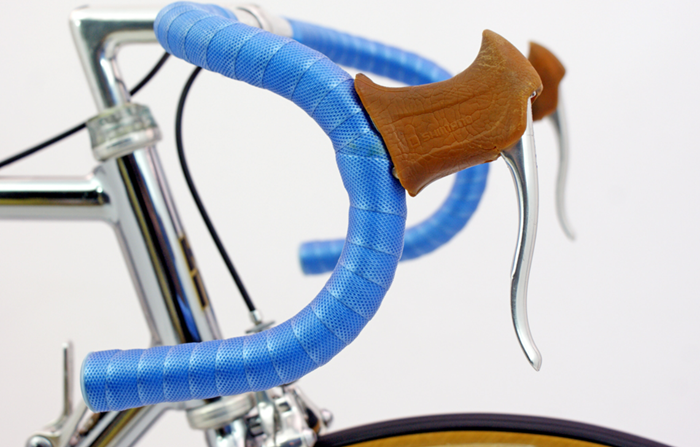
Moreover, the integration of the Shimano Dura Ace AX components showcased a commitment to cutting-edge technology. Although the AX groupset didn’t become a commercial success, it left a lasting mark on how components are designed.
REDUCED WIND RESISTANCE
The emphasis on reducing wind resistance and enhancing power transfer influenced the development of future groupsets. Even today, many of the ideas first explored in the AX series continue to inspire modern component design.
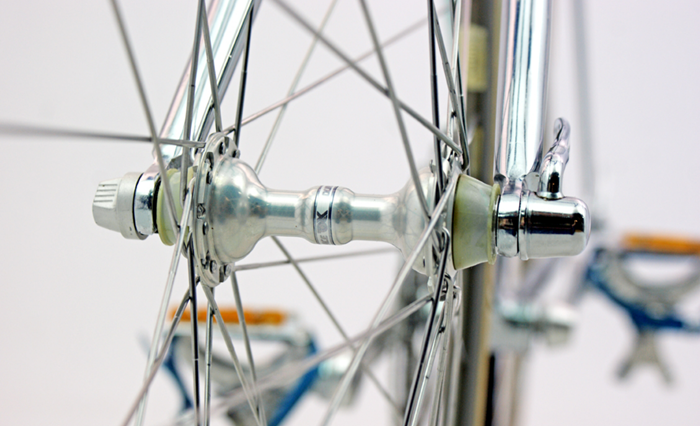
Koga Miyata Technical Innovations
In addition to its technical innovations, the FULL PRO-A also left a mark through its impeccable craftsmanship. Every detail of the bike, from the Concor Profile saddle to the Wolber Profile 18 rims, was carefully chosen to create a harmonious blend of comfort and speed.
This attention to detail set a standard for what a high-performance bike should be. It wasn’t just about going fast; it was about creating a ride that felt perfect in every way.
As we look back, the legacy of the Koga Miyata FULL PRO-A is undeniable. It represents a time when cycling was on the cusp of modern innovation, yet still deeply rooted in tradition. The FULL PRO
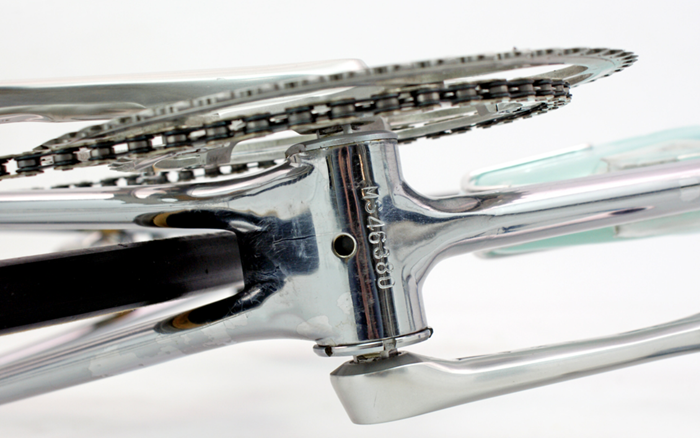
-A bridged that gap, combining the best of both worlds. It remains a beloved icon among vintage bike enthusiasts, not just for its performance, but for the role it played in the evolution of racing bikes.
Enjoy More Cycling and Bicycle Features
If you enjoyed learning about this week’s featured bicycle, don’t miss out on more bike goodness! Visit our website at pacelinebikes.com for cycling information you can use and enjoy. Plus, check out our YouTube channel, Bicycle Restoration Man, for detailed restoration videos and showcases of our finished projects. Subscribe and join our community of bike enthusiasts!
 |
 |
We earn from qualified Amazon purchases with NO cost to you. ANY item that you need or were going to purchased anyway through any of our links, helps support this site. Thank you for your support!
The post Discovering The Koga Miyata Full Pro-A appeared first on Classic Japanese Bicycles.
]]>The post The Elegance of the 3 Rensho Track Bike appeared first on Classic Japanese Bicycles.
]]>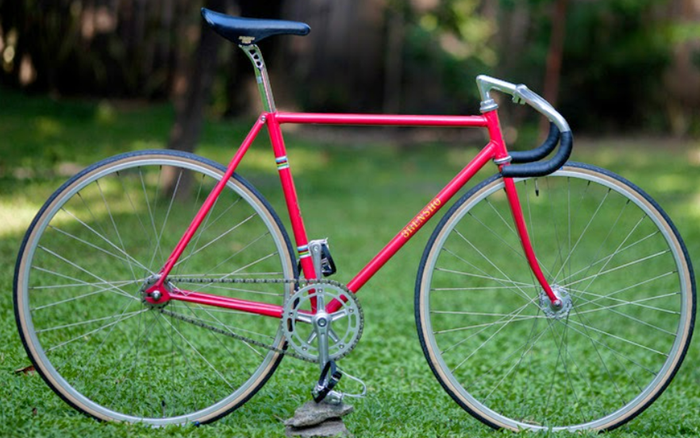
A 3 Rensho Track Bike is this weeks “Japanese Bicycle of the Week”. Owning a 3 Rensho track bike is like holding a piece of cycling history. This masterpiece from the late 1970s to early 1980s embodies the pinnacle of Japanese craftsmanship. Let’s dive into the specifics of this iconic ride and explore what makes it truly exceptional.
the Week”. Owning a 3 Rensho track bike is like holding a piece of cycling history. This masterpiece from the late 1970s to early 1980s embodies the pinnacle of Japanese craftsmanship. Let’s dive into the specifics of this iconic ride and explore what makes it truly exceptional.
3 Rensho bicycles, a name synonymous with quality and performance, were created by the legendary Japanese frame builder Yoshi Konno. Founded in the late 1970s, 3 Rensho quickly rose to prominence in the cycling world, particularly for their track bikes. Konno’s meticulous craftsmanship and innovative designs set a new standard for handcrafted bike frames, earning widespread acclaim and a loyal following.

Tragically, Konno’s career was cut short by a car accident in 1995, but his legacy lives on through the enduring popularity of 3 Rensho bikes. These bicycles are celebrated not only for their exceptional build quality but also for their place in the rich history of cycling.
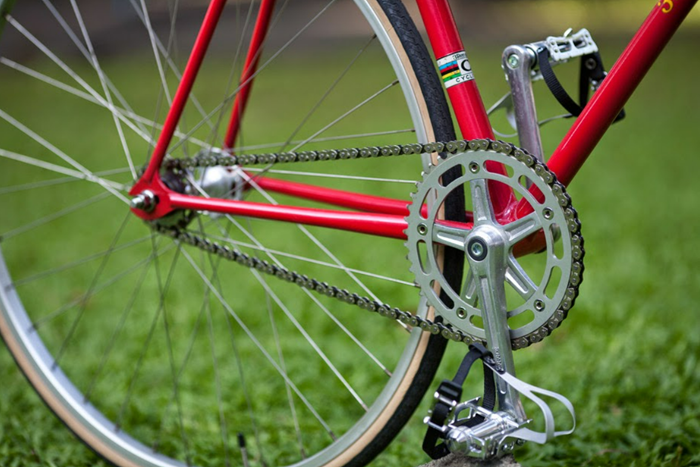
Frame: 3Rensho – Cherubim 1978-1980 with Suntour 10mm Dropouts
The frame is the heart of any bike, and the 3Rensho – Cherubim is no exception. Handcrafted between 1978 and 1980, this frame stands out for its impeccable build quality and timeless design.
The Suntour 10mm dropouts add a touch of precision and reliability, ensuring a perfect fit for the rear wheel. The frame’s sleek lines and sturdy construction make it a joy to ride and a feast for the eyes.

Fork/Headset: 3Rensho / Shimano Dura-Ace 7400
The 3Rensho fork, paired with the Shimano Dura-Ace 7400 headset, provides a seamless connection between the frame and the front wheel. The Dura-Ace 7400, known for its smooth operation and durability, complements the frame’s quality. This combination ensures responsive handling and a stable ride, essential for track cycling.
Crankset/Bottom Bracket: NJS Shimano Dura-Ace 7500 165mm Arm / Shimano 7500
The NJS-certified Shimano Dura-Ace 7500 crankset with 165mm arms is a powerhouse. Designed for optimal power transfer, it allows cyclists to maximize their speed and efficiency on the track. The Shimano 7500 bottom bracket supports the crankset with its robust and reliable performance, making every pedal stroke count.
Pedals: MKS Sylvan Track / MKS NJS Toe Clips / Wellgo Strap
Pedals are the direct link between rider and machine. The MKS Sylvan Track pedals, equipped with MKS NJS toe clips and Wellgo straps, offer a secure and comfortable connection. This setup ensures that your feet remain firmly in place, providing the confidence to push harder and faster without worrying about slipping.
Drivetrain/Cog/Chainring/Chain: 48×17 / Shimano 48 Teeth BIA / KMC
The 48×17 drivetrain, featuring a Shimano 48 teeth BIA chainring and a KMC chain, strikes a perfect balance between speed and control. This gear ratio is ideal for track racing, offering the right mix of acceleration and top-end speed. The Shimano and KMC components work harmoniously to deliver smooth and reliable performance.
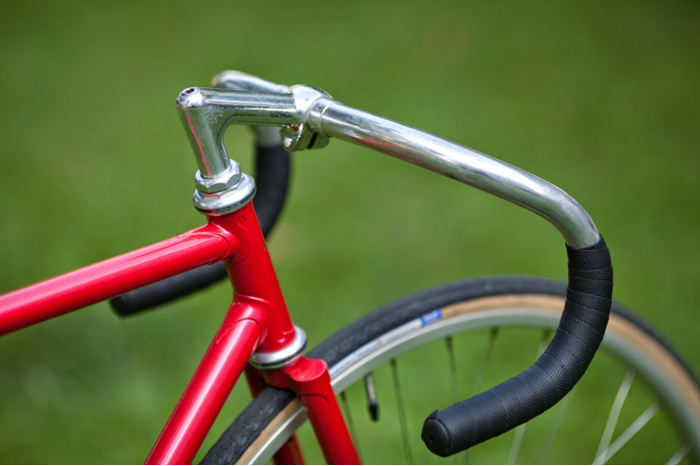
Handlebars/Stem: Nitto B123aa Aluminum 365mm / Nitto Jaguar 100
Handlebars and stem play a crucial role in a bike’s ergonomics. The Nitto B123aa aluminum handlebars, at 365mm wide, provide a comfortable grip and excellent control.
Paired with the Nitto Jaguar 100 stem, this combination offers a stable and responsive steering experience. The classic drop handlebar shape allows for multiple hand positions, catering to different riding styles and preferences.
Saddle/Seatpost: Kashimax Aero NJS / Aero
Comfort and performance meet in the Kashimax Aero NJS saddle. Known for its firm support, it’s a favorite among track cyclists. The Aero seatpost complements the saddle, providing a secure and adjustable platform. This duo ensures that you can maintain an optimal riding position, crucial for long track sessions.
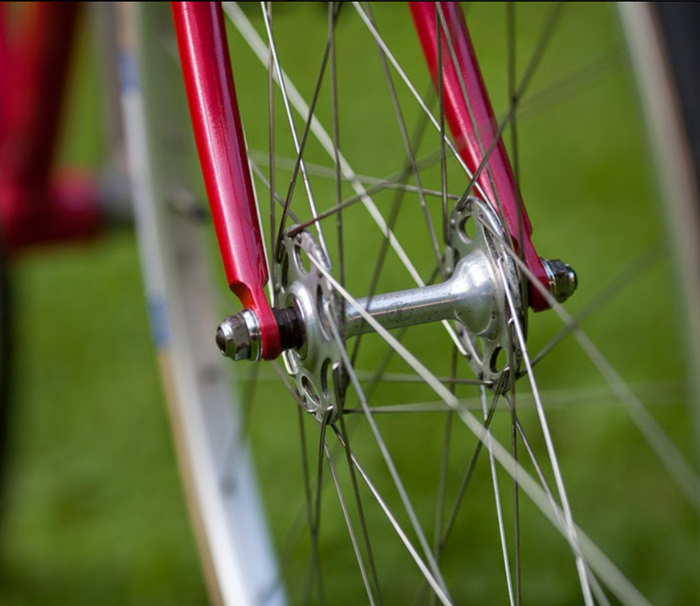
Front Wheel/Hub/Tire: Araya / Dura-Ace 7500 Track Hub / Panaracer Pasela
The front wheel setup features an Araya rim paired with a Dura-Ace 7500 track hub and a Panaracer Pasela tire. Araya rims are renowned for their strength and durability, while the Dura-Ace 7500 hub ensures smooth and reliable rotation. The Panaracer Pasela tire offers excellent grip and comfort, making it a perfect match for the track.
Rear Wheel/Hub/Tire: Araya / Dura-Ace 7500 Track Hub / Panaracer Pasela
Matching the front, the rear wheel also features an Araya rim, Dura-Ace 7500 track hub, and Panaracer Pasela tire. This consistency in components ensures balanced performance and reliability. The rear wheel setup is crucial for maintaining speed and stability, and this combination does not disappoint.
The 3 Rensho track bike is more than just a bicycle; it’s a testament to the art of bike building. Every component, from the frame to the tires, has been carefully selected to deliver unparalleled performance and aesthetics. Whether you’re a seasoned track cyclist or a vintage bike enthusiast, the 3 Rensho offers a ride experience that is both exhilarating and nostalgic.
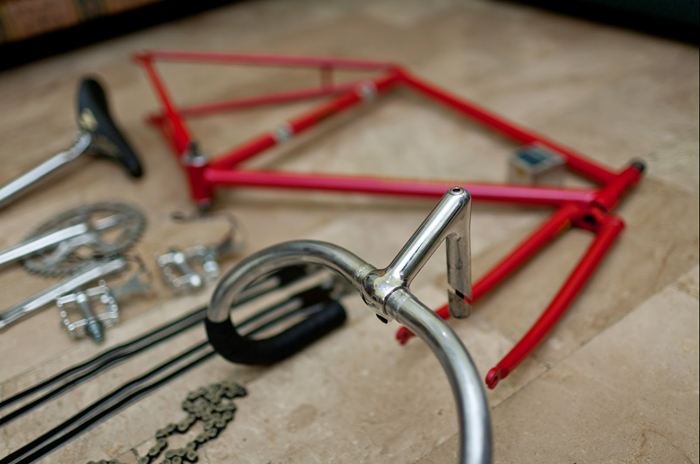
Its timeless design and superior craftsmanship make it a coveted piece for bike collectors and cycling enthusiasts alike. When you ride a 3 Rensho, you’re not just riding a bike; you’re experiencing a piece of cycling history, meticulously crafted to perfection.
This fixed gear bike stands out in the cycling culture as a symbol of precision engineering and high-quality bike materials. From its durable bike components to its classic bike design, the 3 Rensho remains an iconic bike brand, cherished by those who appreciate legendary bike makers and the rich cycling heritage they represent.
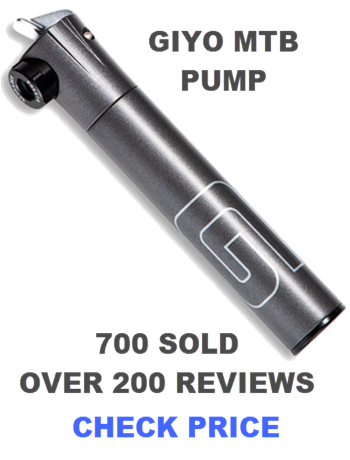 |
 |
We earn from qualified Amazon purchases with NO cost to you. ANY item that you need or were going to purchased anyway through any of our links, helps support this site. Thank you for your support!
The post The Elegance of the 3 Rensho Track Bike appeared first on Classic Japanese Bicycles.
]]>